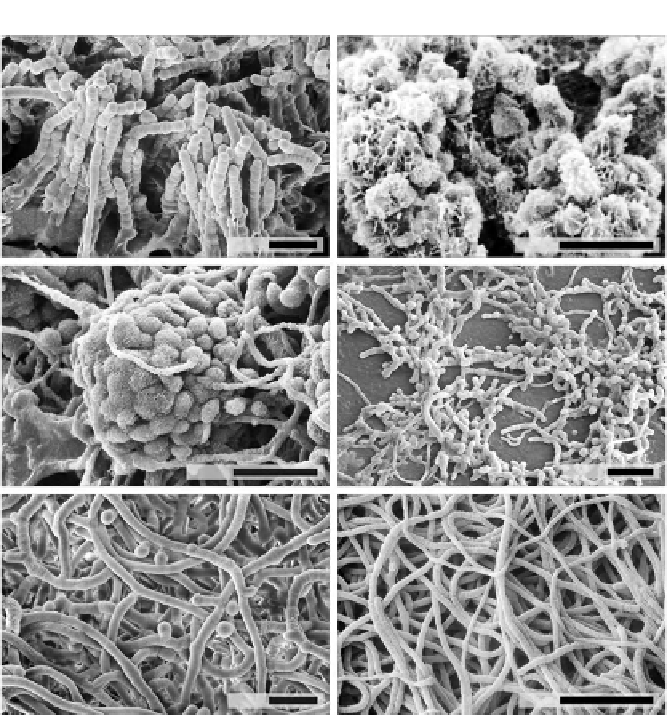Environmental Engineering Reference
In-Depth Information
B
A
30
m
m
30
m
m
C
D
30
m
m
30
m
m
E
F
30
m
m
30
m
m
FIGURE 4
SEM images of casted microborings produced by cyanobacteria. (A)
Fascichnus
dactylus
, recent, Faial, Azores, intertidal. (B)
Fascichnus acinosus
, Upper Jurassic, Consolacao,
Portugal (courtesy of Ingrid Glaub). (C)
Fascichnus rogus
, recent, Kosterfjord, Sweden, intertidal.
(D)
Fascichnus parvus
, recent, Faial, Azores, 15 m water depth. (E)
Eurygonum nodosum
, recent,
Faial, Azores, intertidal. (F)
Scolecia filosa
, recent, Faial, Azores, 60 m water depth.
The endolithic life habit of cyanobacteria dates at least as far back as the
Early Proterozoic with the oldest record of
Euhyella campbellii
reported from
1.7 Ga old stromatolites discovered in China (
Zhang and Golubic, 1987
). Some
representatives of this genus are still around today and illustrate the evolution-
ary longevity of microendoliths.
3.2 Chlorophytes and Rhodophytes
Bioeroders are found within the Chlorophyta (green algae) as well as Rhodo-
phyta (red algae). They are eukaryotes which reproduce by vegetative or sexual
means. Chlorophytes are photoautotrophs and only for the low-light extremist
Ostreobium quekettii
a facultative chemoheterotrophy was suggested (e.g.,









Search WWH ::

Custom Search